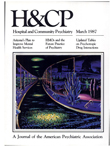Using Family Psychoeducation When There Is No Family
Abstract
High familial expressed emotion, which may be a specific form of social overstimulation, has been linked to schizophrenic relapse and rehospitalization. Research on expressed emotion has led to a new generation of demonstrably effective family treatments for schizophrenia that rely heavily on psychoeducational techniques. Although most schizophrenic patients do not live with families, the family psychoeducational model has not been applied in nonfamilial living settings. The authors report two examples in which the family psychoeducational model was successfully used in group living situations and discuss the implications of expressed emotion and family psychoeducation for schizophrenic patients who live in nonfamilial settings.
Access content
To read the fulltext, please use one of the options below to sign in or purchase access.- Personal login
- Institutional Login
- Sign in via OpenAthens
- Register for access
-
Please login/register if you wish to pair your device and check access availability.
Not a subscriber?
PsychiatryOnline subscription options offer access to the DSM-5 library, books, journals, CME, and patient resources. This all-in-one virtual library provides psychiatrists and mental health professionals with key resources for diagnosis, treatment, research, and professional development.
Need more help? PsychiatryOnline Customer Service may be reached by emailing [email protected] or by calling 800-368-5777 (in the U.S.) or 703-907-7322 (outside the U.S.).



